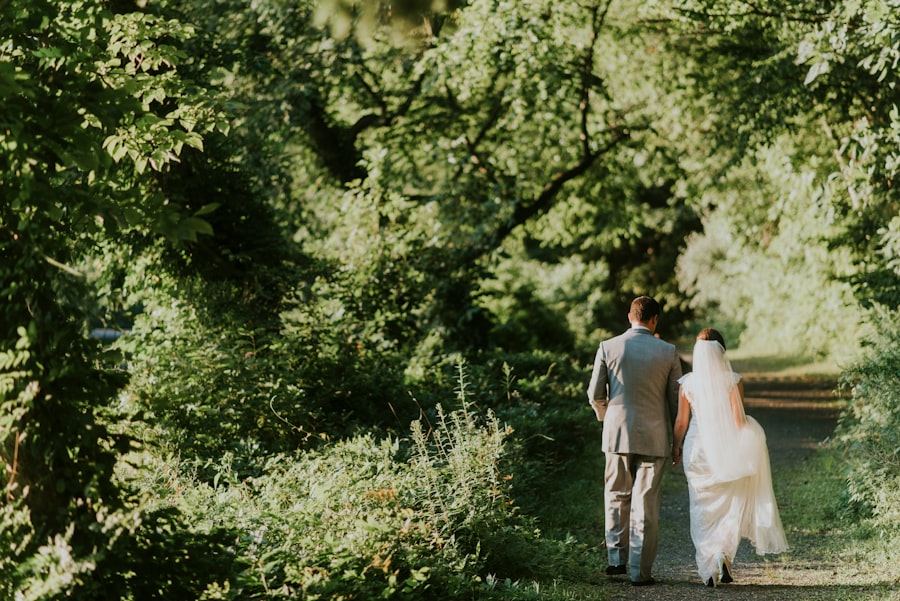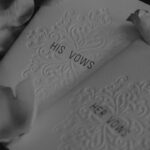In a small, picturesque town known for its serene landscapes and tight-knit community, the discovery of a bride’s corpse sent shockwaves through the local populace. The body was found in a secluded area near a popular hiking trail, a place often frequented by couples and families seeking a moment of tranquility amidst nature. The bride, dressed in a tattered wedding gown, was discovered by a group of hikers who initially thought they had stumbled upon an elaborate prank or a film set.
However, the grim reality soon set in as they realized the lifeless figure was indeed that of a woman who had been reported missing just days before her wedding. The scene was hauntingly surreal. The wedding dress, once a symbol of joy and celebration, was now stained and torn, suggesting a violent struggle.
The surrounding area bore no signs of a struggle, leading investigators to ponder how the bride ended up in such a remote location. As news of the discovery spread, the town was engulfed in a wave of disbelief and horror. Friends and family members of the bride were left grappling with the shocking reality that their loved one had met such a tragic fate just as she was about to embark on a new chapter of her life.
Investigation and Autopsy Findings
The initial investigation commenced immediately after the body was discovered. Law enforcement officials cordoned off the area, treating it as a potential crime scene. Forensic teams meticulously combed through the surroundings for any evidence that could shed light on the circumstances leading to the bride’s death.
The autopsy, conducted by the county coroner, revealed critical information that would shape the direction of the investigation. Preliminary findings indicated that the bride had suffered blunt force trauma to the head, suggesting foul play rather than an accidental death. Further examination uncovered additional details that deepened the mystery.
Toxicology reports indicated traces of alcohol and prescription medication in her system, raising questions about her state of mind leading up to her death. Was she under duress? Had she been coerced into a situation that ultimately led to her demise?
The autopsy also revealed that she had been deceased for several days before her body was found, complicating the timeline of events surrounding her disappearance. Investigators were left with more questions than answers, as they sought to piece together the final moments of her life.
The Missing Groom and Suspicious Circumstances

As investigators delved deeper into the case, attention turned to the groom, who had been reported missing shortly after the bride’s disappearance. His absence raised immediate suspicions, particularly given the timing of both events. Friends and family described him as a loving partner who had been eagerly anticipating their wedding day.
However, as details emerged about his whereabouts during the critical days leading up to the discovery of the bride’s body, doubts began to surface. Witnesses reported seeing him in various locations around town, but his alibi remained shaky at best. Some claimed he had been acting strangely in the days prior to both his fiancée’s disappearance and his own vanishing act.
The police began to scrutinize his background, uncovering a series of troubling incidents from his past that hinted at a more complex personality than previously understood. As investigators pieced together his movements and interactions with others, it became increasingly clear that he was not merely a grieving fiancé but potentially a key figure in unraveling this tragic narrative.
Theories and Speculations Surrounding the Case
With both the bride’s death and the groom’s disappearance shrouded in mystery, various theories began to circulate within the community and beyond. Some speculated that the couple had been involved in a tumultuous relationship marked by jealousy and conflict. Friends recounted instances where they had witnessed heated arguments between them, leading some to believe that their love story may have taken a dark turn.
This theory suggested that perhaps an altercation had escalated beyond control, resulting in tragedy. Others proposed more sinister possibilities, including premeditated murder or even an elaborate scheme involving multiple parties. Some theorists suggested that the bride may have been involved with someone else entirely, leading to a confrontation with her groom on what should have been one of the happiest days of their lives.
The idea that this could have been an act of revenge or jealousy added layers of complexity to an already convoluted situation. As rumors spread like wildfire, each new theory seemed to fuel public fascination with the case while simultaneously complicating the investigation.
The Bride’s Background and Possible Motives
To understand the circumstances surrounding her death, investigators began to delve into the bride’s background. They uncovered a life filled with aspirations and dreams that had seemingly culminated in her upcoming wedding. Friends described her as vibrant and ambitious, with plans for a future that included not only marriage but also career advancement in her chosen field.
However, as they probed deeper into her past, they discovered elements that hinted at underlying struggles. The bride had faced significant challenges in her life, including familial pressures and personal insecurities that may have influenced her relationships. Some friends noted that she had experienced bouts of anxiety and depression, particularly as her wedding day approached.
This revelation led investigators to consider whether these emotional struggles could have played a role in her tragic fate. Was she feeling overwhelmed by expectations? Did she harbor doubts about her impending marriage?
These questions lingered as they sought to piece together her state of mind leading up to her death.
Interviews with Family and Friends

In an effort to gain insight into both the bride’s life and her relationship with the groom, investigators conducted interviews with family members and close friends. These conversations revealed a tapestry of emotions ranging from shock and grief to confusion and anger. Family members expressed disbelief that their daughter or sister could be involved in such a tragic situation, while friends struggled to reconcile their memories of joyful moments with the grim reality of her death.
Some friends recounted moments leading up to the wedding that hinted at underlying tensions between the couple. They described instances where the bride seemed anxious or distant, raising concerns about whether she was truly ready for marriage. Others spoke highly of the groom, portraying him as supportive and loving but also hinting at moments where he exhibited possessive behavior.
These conflicting narratives painted a complex picture of their relationship, leaving investigators with more questions than answers as they sought to understand what transpired in those final days.
The Search for Clues and Evidence
As investigators continued their work, they focused on gathering physical evidence that could provide clarity regarding the events leading up to the bride’s death. They scoured both the crime scene where her body was found and locations associated with both individuals in hopes of uncovering clues that might lead them closer to understanding what happened. Surveillance footage from nearby businesses was reviewed meticulously for any signs of activity involving either party during critical times.
Additionally, forensic analysis played a crucial role in piecing together timelines and interactions. DNA evidence collected from under her fingernails suggested a struggle had taken place before her death, indicating she may have fought back against an assailant. This finding prompted investigators to explore potential suspects beyond just the groom, expanding their search for anyone who may have had motive or opportunity to harm her.
Each piece of evidence collected added another layer to an already intricate puzzle.
The Ongoing Police Investigation and Future Developments
As time passed without significant breakthroughs in the case, public interest remained high, with media coverage amplifying speculation surrounding both the bride’s death and the groom’s disappearance. Law enforcement officials continued their investigation diligently but faced mounting pressure from both the community and media outlets eager for answers. The case became emblematic of broader societal issues surrounding domestic violence and mental health awareness.
With each passing day, new developments emerged—some promising leads turned out to be dead ends while others opened up fresh avenues for exploration. Investigators remained committed to uncovering the truth behind this tragic event, knowing that justice for the bride would require not only solving her murder but also addressing any underlying issues that may have contributed to this heartbreaking situation. As they worked tirelessly behind closed doors, hope lingered among family members and friends that one day they would find closure in this harrowing tale marked by love turned tragic.
FAQs
What is a bride corpse?
A bride corpse refers to the body of a deceased woman who is dressed in a bridal gown, often for a funeral or memorial service.
Why do some cultures dress deceased women in bridal gowns?
In some cultures, it is a tradition to dress deceased women in bridal gowns as a symbol of purity and to honor their femininity. It may also be a way to celebrate the woman’s life and acknowledge her beauty.
Is dressing a deceased woman in a bridal gown common practice?
The practice of dressing a deceased woman in a bridal gown varies by culture and is not universally practiced. It is more commonly seen in certain regions and communities.
What is the significance of dressing a deceased woman in a bridal gown?
Dressing a deceased woman in a bridal gown can symbolize her transition to the afterlife or her eternal union with her spouse. It may also serve as a way to honor the woman’s life and pay tribute to her beauty and femininity.
Are there any religious or spiritual beliefs associated with dressing a deceased woman in a bridal gown?
In some cultures, there may be religious or spiritual beliefs associated with dressing a deceased woman in a bridal gown, such as the belief in an afterlife or the continuation of a spiritual union with her spouse. However, these beliefs vary widely and are not universal.










